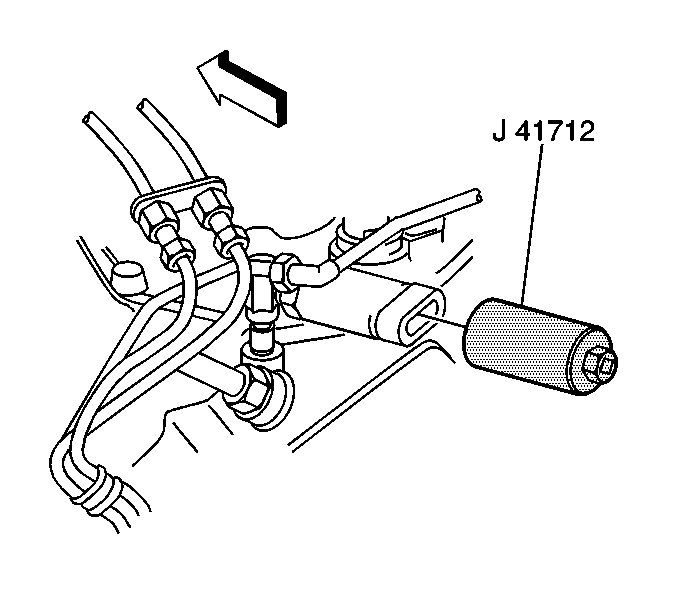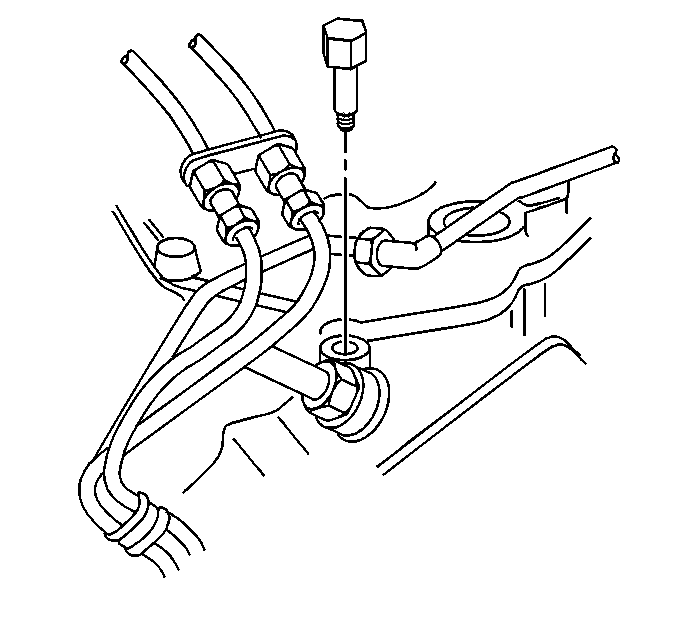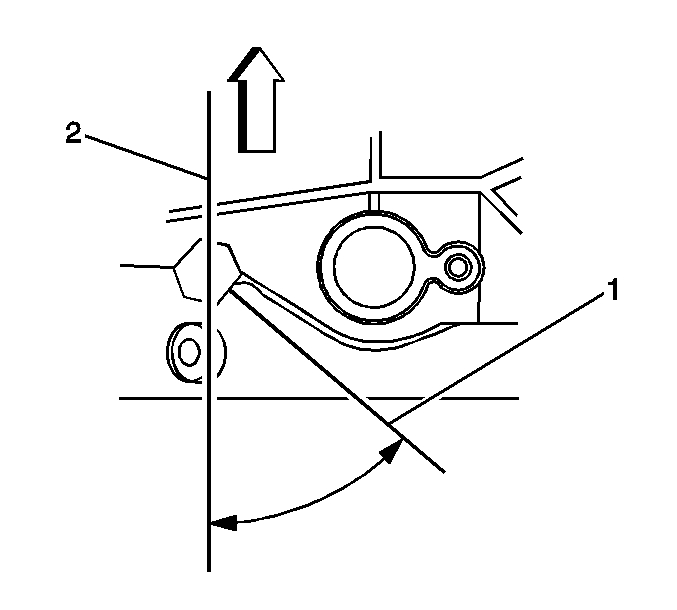Tools Required
J 41712 Oil Pressure Switch Socket
Removal Procedure
Important: Clean the area around the oil pressure sensor. Do not allow debris to enter the engine.
- Disconnect the fuel pump/oil pressure sensor electrical connector (3).
- Using J 41712 , remove the fuel pump/oil pressure sensor.
- Remove the fuel pump/oil pressure sensor fitting, if necessary.



Important: Note the alignment of the engine oil pressure sensor fitting prior to removal.
Installation Procedure
- Apply sealant GM U.S. P/N 12346004, Canada P/N 10953480, or equivalent to the threads of the sensor fitting, if installing the old fitting.
- Install the fuel pump/oil pressure sensor fitting until snug, if necessary.
- Tighten the fuel pump/oil pressure sensor fitting.
- Tighten the fuel pump/oil pressure sensor fitting to 15 N·m (11 lb ft).
- Increase torque until the centerline of the fitting (1) is 50 degrees from the centerline of the crankshaft (2).
- Apply sealant GM U.S. P/N 12346004, Canada P/N 10953480, or equivalent to the threads of the fuel pump/oil pressure sensor, if installing the old sensor.
- Using J 41712 , install the fuel pump/oil pressure sensor.
- Connect the fuel pump/oil pressure sensor electrical connector (3).
- Check and adjust the engine oil level, if necessary.


Notice: Use the correct fastener in the correct location. Replacement fasteners must be the correct part number for that application. Fasteners requiring replacement or fasteners requiring the use of thread locking compound or sealant are identified in the service procedure. Do not use paints, lubricants, or corrosion inhibitors on fasteners or fastener joint surfaces unless specified. These coatings affect fastener torque and joint clamping force and may damage the fastener. Use the correct tightening sequence and specifications when installing fasteners in order to avoid damage to parts and systems.
Tighten

Tighten
Tighten the fuel pump oil pressure sensor to 30 N·m (22 lb ft).

